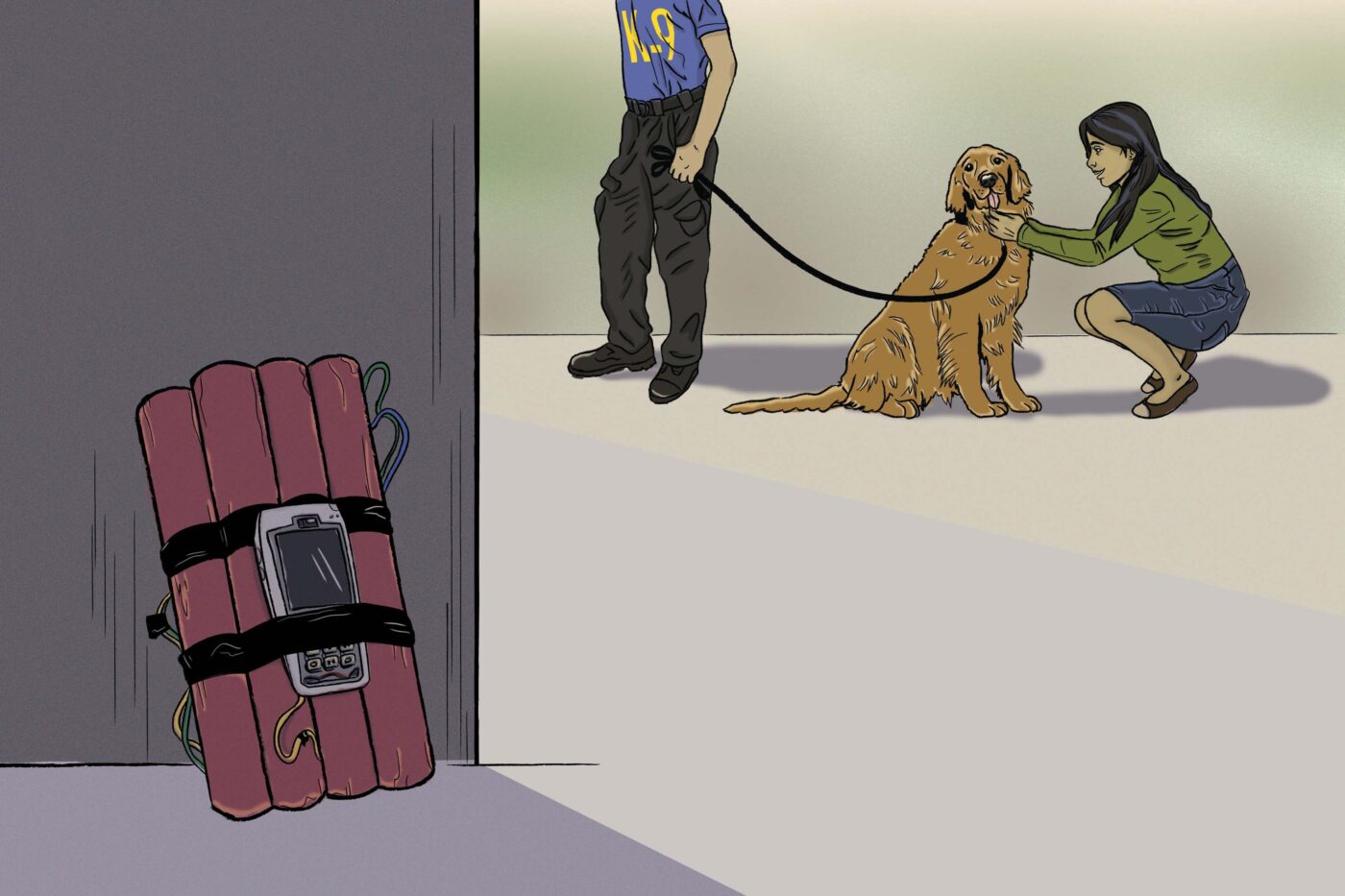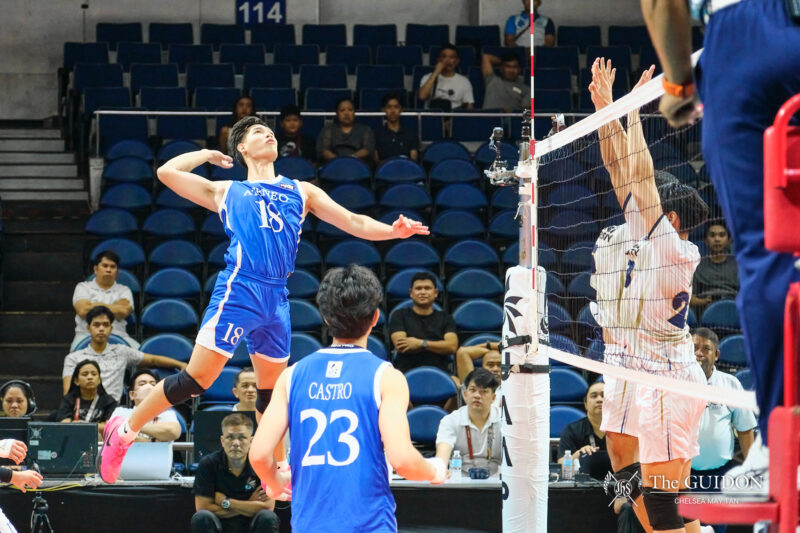The effectiveness of Ateneo’s security in question
March 28, 2016. The Ateneo receives a bomb threat at 8:32 am from an unknown source. Office of Student Services (OSS) Director Cholo Mallillin announces the bomb threat to the community at 9:57 am. At 10:14 am, classes and work are called off in the Loyola Schools. The school is eventually fully evacuated at 11:15 am.
There have been two bomb threats in the Ateneo in the last three years. To put this number in perspective, in the five years from 2009 to 2013, the school received no reported bomb threats. Because of this alarming rise in bomb threats, questions about the university’s security system have been raised.
University security will always be a work in progress. Dangers around the community come and go, but no matter the situation, the Ateneo is expected to protect its students. Because of this, the university does its best to constantly improve the system and the necessary technology.
But the question remains: how safe is our campus?
The security system
Formed in 2012, the Campus Safety and Mobility Office (CSMO) is the brainchild of the Ateneo Traffic Group, a committee made to study the traffic problem in the Ateneo. The office is the highest office with regard to on-campus safety and handles the whole Ateneo de Manila campus which includes the Grade School, High School and the Loyola Schools.
There are two jobs the CSMO must fulfill. The first job of the office is to protect the community. This can be divided into three parts: On-campus security, medical safety, and disaster management. The second job is mobility. It is tasked with the responsibility of creating schemes to help alleviate the traffic problem on-campus. Coordination with the local government units and the Metro Manila Development Authority is the main aspect of this job.
The main security problem that CSMO sees on-campus is that of petty theft and misplaced items. Many incidents of misplaced items, which include phones and laptops, are reported to the Office of Student Affairs.
Another problem, the CSMO notes, is the frequency of bomb threats. Two bomb threats in the span of three years is no laughing matter and the security implications these bomb threats have on the school is immense. Recently, Metro Manila has been threatened with frequent bomb threats. This is a big worry for the CSMO as well, as Katipunan is a heavily metropolitan area.
The CSMO has had to overhaul its procedures to speed up the evacuation of the school in case one does happen. In the eyes of the CSMO, these problems stem from a bigger problem: Surveillance.
The CSMO is attempting to implement a new and improved security system starting this year, 2016. According to Marcelino Mendoza, Director of the CSMO, the project has been pending since 2014 but there has been a conflict with the Department of Public Works and Highways (DPWH). “We are just waiting for the final plan of DPWH,” Mendoza said. “They plan to expand Northbound Katipunan [and] they will get [one] lane from us.”
The project has two aspects to it: the improvement of the range of the Closed-Circuit Television Cameras (CCTVs) around campus and the use of Radio-frequency identification cards (RFIDs).
“Starting this year, pinapalalagyan namin ng CCTV [ang] lahat (Starting this year, we’re placing CCTVs everywhere),” Mendoza explained. The goal of the project is to improve the visibility around campus to better tackle the problem of petty crime.
Perpetrators often avoid guards by blending in with the students and tracking down crime is difficult without hard evidence. The common areas of the campus are the main targets of this program, especially the main roads and the parking areas. This is meant to increase the security in these areas in which usually just one guard is stationed.
The CCTVs also fix the problem of unknown visitors entering the campus by simply accompanying students. Having a wider CCTV range helps security keep track of these visitors and their movements.
In coordination with this, RFIDs will be used along with the increased number of CCTV’s. According to Mendoza, visitors will have their own RFIDs upon entry at the gates. This will help the security keep track of the number of visitors. Another benefit of the RFIDs is the improved restriction in accessing campus facilities. These RFIDs will be needed by a students and staff members to scan into certain facilities on campus, therefore creating an easier environment for a fool-proof security system.
All of these also point to the CSMO’s bigger goal of reducing the number of guards. Mendoza uses the typical campus in the United States as an example, saying that “one can barely see security guards around campus. But the [new] system is fool-proof, because you have CCTV and alarms.” The main point, therefore, is to reduce the human error when it comes to security.
For the community
Campus security helps the community work and study peacefully. “Students who report feeling unsafe in the classroom experience consistent, negative effects on test scores,” Johanna Lacoe, PhD, notes in a 2013 study. Lacoe’s study highlights the effects that unsafe school environments have on students’ performance and attitude towards school. Kay Bunagan, an Instructor in the Psychology Department, agrees with this sentiment. “A school environment that nurtures psychological and physical safety is conducive to learning and growth of students, teachers, and staff,” Bunagan explained.
However, a problem that security has is that it may foster a false sense of security in the student body. “Security is both a feeling and a reality,” explains world-renowned privacy specialist Bruce Schneier in his 2008 essay entitled, “The Psychology of Security.” Captured in the work is the conclusion that when someone feels safe, this leads them to perceive less risk.
Heightened security helps create this feeling of safety and dulls the senses to the environment. The CSMO can do everything in their power to protect the community in the campus. The problem with this, however, is that it is limited in the campus. The school only has a defined space where it has the power to protect the community. This makes it dangerous for the students who are so used to this safety. They may become complacent outside the campus and maintain the belief that they are safe wherever they go.
According to the National School Safety and Security Services based in the United States, “the first and best line of defence is a well-trained, highly alert school staff and student body.” The school deals with this by educating its students to be highly-alert. Students learn to have their own security systems in terms of their bodies and belongings. Events like drug talks teach the students to be aware of the world around them.
By the community
Communication is key for an effective security system. The ones responsible for security must also get the approval and the cooperation of the community it seeks to protect. It is a circular relationship where both sides must provide a service for the other.
The annually-distributed Student Handbook is a prime example of this circular relationship. Students are made to sign a contract stating that they will abide by the rules and regulations of the school. The handbook will only work if the school makes sure the handbook is complete and fair. At the same time, the students, by signing the contract, must follow the rules stated inside.
Earthquake and fire drills also serve to illustrate this circular relationship. The school must make sure to disseminate information and educate the students of the protocol to be followed in case a disaster occurs. In turn, students must participate and learn the protocol that the school wishes to implement for these plans to work. In the case of a real disaster, the amount of injuries and fatalities could be determined by the students’ knowledge of the rules.
The importance of student involvement is recognized by the school as well. The CSMO advocates a healthy discourse between the administration and the community. According to Mendoza, the CSMO “[always] gets in touch with the student groups” through Mallillin and the OSS. He also mentioned that the involvement of the student body is “very important” for the CSMO to be able to do its job.
Bunagan also echoes this sentiment. “Having a representative from each sector or stakeholder contributes to a more holistic and comprehensive approach to the process and plan,” she said.
We hold the answer
The answer to the question of safety on-campus is a complicated one.
It can be said that the policies are effective, since no real security breach has been reported recently. Although there have been bomb threats, none of these have escalated to fatalities and injuries. The problems the campus have consisted of petty crime and the occasional traffic violations. In rare cases there have been kidnappings, but no physical harm was reported.
On the other hand, the ease with which outsiders can enter is an argument against the safety of the campus. It can be said that the amount of guards is still low, that the current arrangement of having one guard per building is insufficient. K-9 unit concentration can be increased. The systems involving ID cards can be improved and the access that people have to different facilities is suspect. The problems when it comes to the CCTV range without the new project could be pointed out as well.
All of these things could be factors to say whether the campus is safe or not, but in reality it is the community that decides the true safety of the campus.
In the end, the students must have a sense of responsibility for their own safety and the safety of the people around them. True safety can only be achieved if the community works together with the administration. The effort must be a united and conscious decision to care for one another.
So, are we safe or not?







